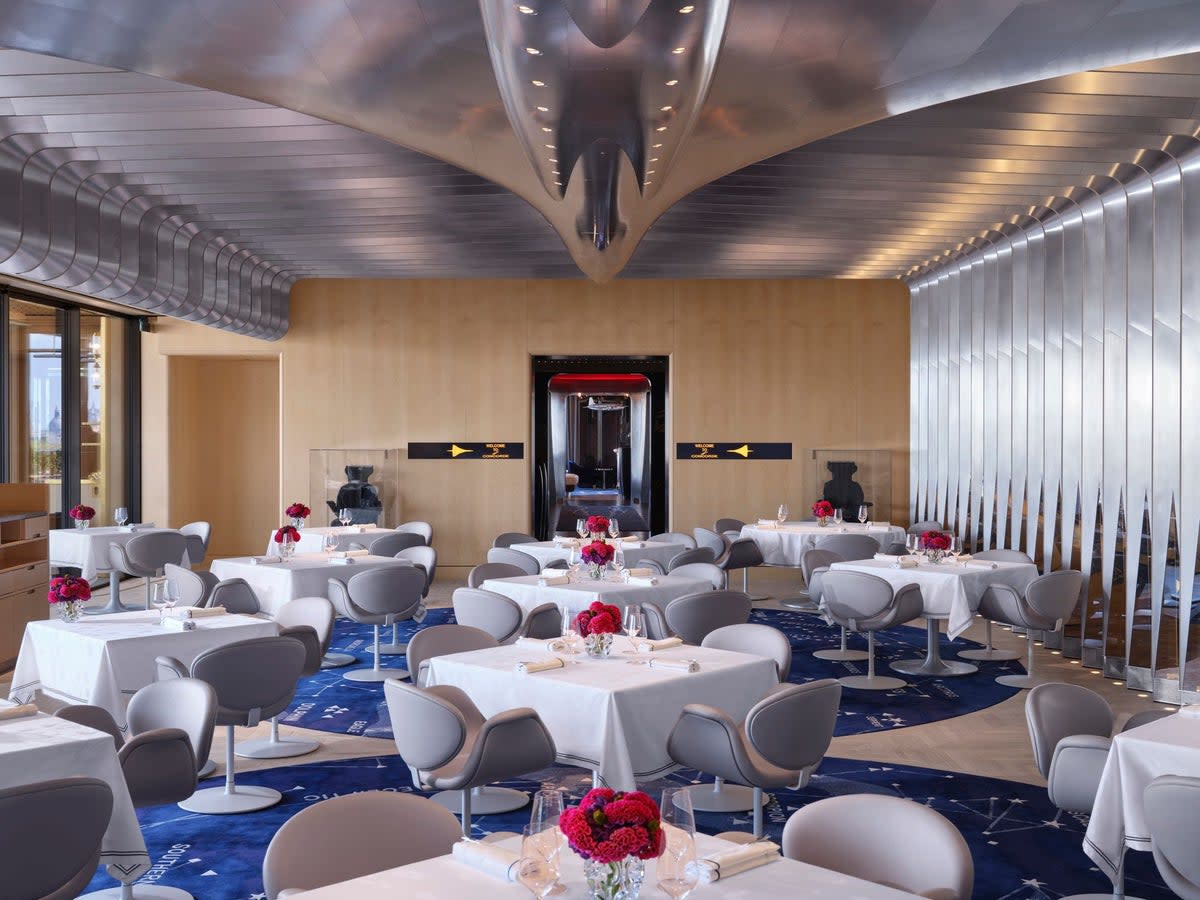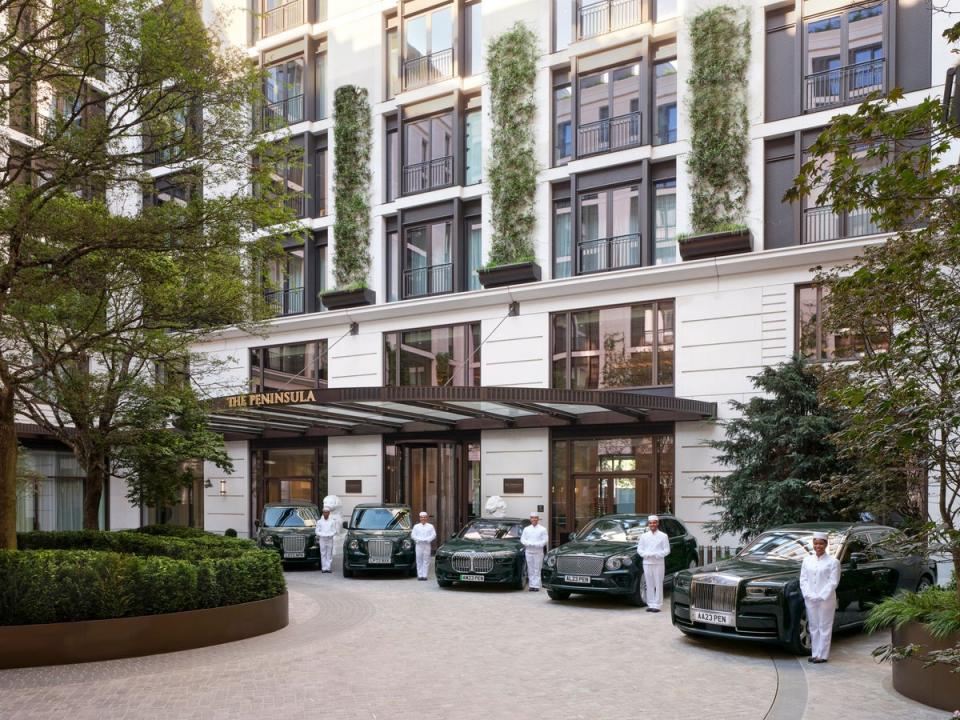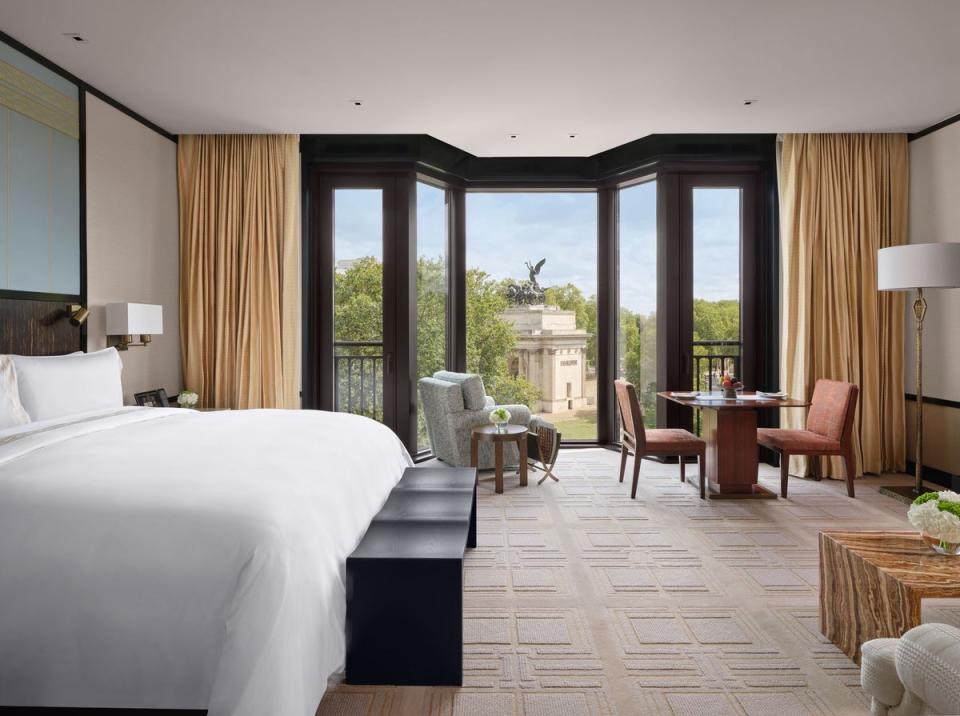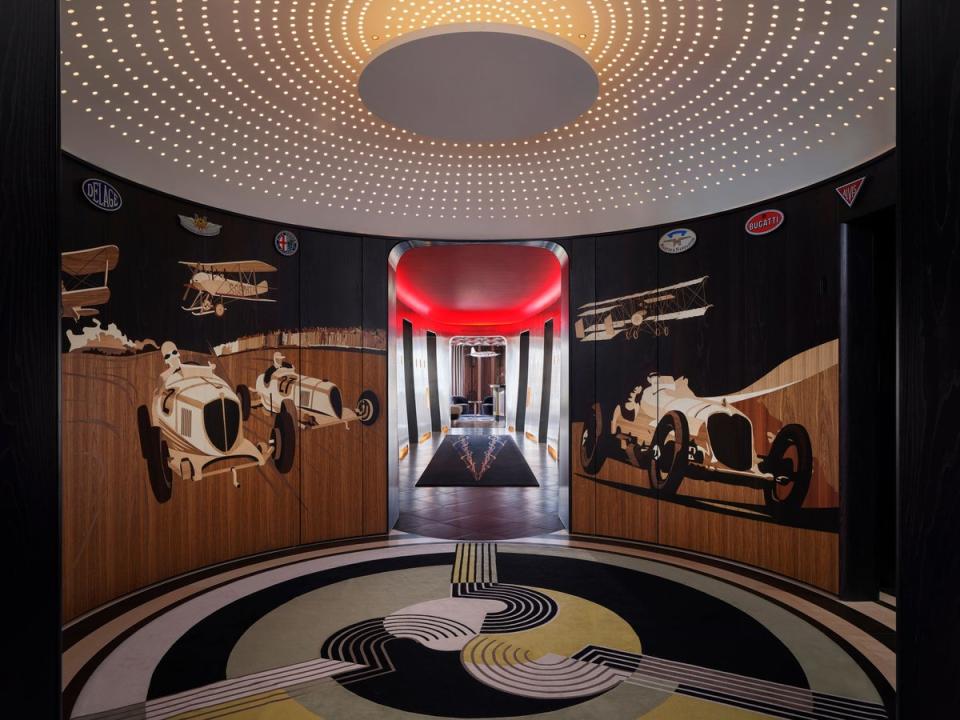Does London's first billion pound hotel live up to the hype?

London has never pretended to be a cheap town. But things are getting out of hand. We now live in a metropolis where a Mayfair restaurant can charge £900 for a steak, the absurd price for a slab of Wagyu at new Japanese joint Aragawa. Set against that, £1,300 for a night’s stay at the Peninsula London, the capital’s first purpose-built five star hotel since the Bulgari in 2012, seems almost a bargain. Everything is relative.But that, of course, will only get you through the door of an entry level bedroom. In reality, once you have motored through afternoon tea, a cocktail or two, dinner with a decent bottle, and of course breakfast, your credit card would soon be straining to stay under the £2,000 mark.
So what do you get for the sort of money that would cover a reasonably lavish weekend break for two in Paris or Rome? Can it ever be “worth it” for Londoners outside the global elite that is the Peninsula’s target market?
The hotel, perched on the edge of Belgravia overlooking the six lanes of perpetual motion swirling around Hyde Park Corner, has been 30 years and £1.1 billion in the making. The company’s chairman, Sir Michael Kadoorie, whose family opened the original Peninsula hotel in Hong Kong in 1928, finally landed the dream location for his brand of Asian hospitality when the site of the former headquarters of civil engineering firm McAlpine came available. It is not quite fully open yet, with the spa, swimming pool and some luxury boutiques coming later in the year.
The experience begins when your taxi — or hopefully limousine — pulls into the calming cobbled courtyard at the heart of the hotel. Instantly the stresses of life “on the outside” begin to retreat. The hotel’s fleet of Peninsula green liveried Rolls-Royce and Bentley limousines, including a £600,000 Phantom II and a 1935 Rolls-Royce Phantom Sedanca de Ville, parked in the courtyard to ferry guests to Harrods and Harvey Nicks just a few hundreds yards away, set the tone.

This is Succession-land where every detail, every aspect of the design shouts of luxury and wealth, right down to the silver plate Ercuis coffee spoons in the rooftop restaurant. They cost around £67 each, I looked it up. It is easy to see how that £1.1 billion got spent.
Once through the doors into the Peter Marino-designed lobby the immaculate Peninsula hospitality kicks in. Everyone seems to know my name. All those “Mr Prynns” could go horribly wrong, cloying, obsequious even, but the staff, clad in their sharp Jenny Packham uniforms, nail it. They really do seem delighted to see me. It is tribute to their training.
Entering the bedroom is a coup de theatre — if you are lucky enough to be staying on the Hyde Park Corner side of the building. The floor-to-ceiling view is pure distilled “essence of London” — Wellington Arch crowned by the Angel of Peace, Europe’s largest bronze sculpture, with its endless circulation of double decker buses and black cabs. It is spectacular and mesmeric. And almost silent. Triple glazing blocks out all but the vaguest murmur of traffic noise.
The bed is an Emperor-sized expanse — wider than it is long — with a Simmons Beautyrest mattress covered by exquisite Quagliotti 1933 linen sheets, to caress our sleeping bodies. We may spend about a third — or more than £400’s worth — of valued Peninsula time unconscious, but that does not mean we are not still being pampered as we push out Zs.
The room is an Aladdin’s Cave of gadgets and accessories. There is a tablet and smart phone-style devices by the bed for controlling the curtains or air conditioning, or contacting reception. One drawer reveals a printer, another a Poc a Poc French porcelain tea set. And was it my imagination, or was the crockery drawer slightly warmed to prevent tea being poured into cold cups? No sign of Toblerone and Prosecco in the mini-bar. Instead Deutz champagne and Charbonnel et Walker truffles.

The bathroom — a cavern of honey coloured mosaic and onyx behind mahogany sliding doors — is a whole new adventure. Once again technology is, as it were, on tap. A pad by the bathtub summons dozens of TV channels — tellingly Al Jazeera and Al Arabiya are first on the menu rather than BBC1 — and a spa mode button automatically turns down the lights and activates the “Do Not Disturb” sign.
Even the most private moments of your stay are enhanced. Yet another keyboard controls, among other things, the temperature of the loo seat and a water jet that refreshes the parts mere four star hotel toilets cannot reach. Every room also comes with a mahogany-panelled dressing room as big as some entire hotel bedrooms.
So, bathed, suited and booted it is off for a cocktail we go. Pre-dinner drinks were in the sensuous and cosy Asian-themed Little Blue bar where just 20 covers are dominated by an elegant porcelain bamboo tree. House cocktails are priced at £20 to £22 and I choose a “Gentlemen” a cherry, orange, absinthe, cinnamon and bourbon take on a whisky sour. The dimly-lit Chinese restaurant upstairs, Canton Blue, is designed to evoke the interiors of the 19th century Keying Junk that plied the route from Hong Kong to New York and London. The Silver Hill Peking Duck is as good as any I have tasted with golden, perfectly crisped skin — and a seriously hefty price tag of £135 for two.
The hotel’s other main restaurant Brooklands is an unashamed homage to two obsessions of Sir Michael — Concorde and classic racing cars — on the eighth floor. The Brooklands “experience” starts in a dedicated lift lobby displaying an original nose cone from the supersonic plane. The slight sense of “theme park” — albeit in the best possible taste — continues upstairs in the restaurant where a huge to scale aluminium 13.6 metre Concorde replica designed by London architects Archer Humphryes hangs above the dining room, and a pilot’s seat is on display in a perspex box. I have never flown Concorde but I assume the food is not a take on BA’s in-flight service. The restaurant — overseen by chef director Claude Bosi of Bibendum fame, chef de cuisine Francesco Dibenedetto — is Michelin star-level ambitious. A seven course tasting menu that showcases British ingredients such as Exmoor caviar, Devonshire skate and Scottish ceps, costs £215 with wine pairing adding an extra £145 for six glasses, and £105 for four. A five course alternative is £195.

In the rooftop Brooklands bar the car theme takes over. The seating and wall panelling are inspired by the interiors of a Rolls-Royce Silver Ghost. When it is all over, the bill paid, the last “Mr Prynn” still ringing in your ears, it is time to walk back through the wardrobe from the parallel universe you have been inhabiting for those brief hours. Can it ever be worth the money? For a fleeting 24-hour insight into the charmed life of the world’s rain makers, plutocrats and A-listers it is just about possible to make the case for a one-off splurge.
Anyway I got lucky. I got to take the Rolls-Royce Phantom back to Hammersmith, not long after the same car had been used to ferry Prince Michael of Kent home to Kensington Palace. But with the click of the closing door it was over. I was back in the real world.
From £1,300 per night, as part of an introductory offer until November 30, breakfast and house car are included; peninsula.com


